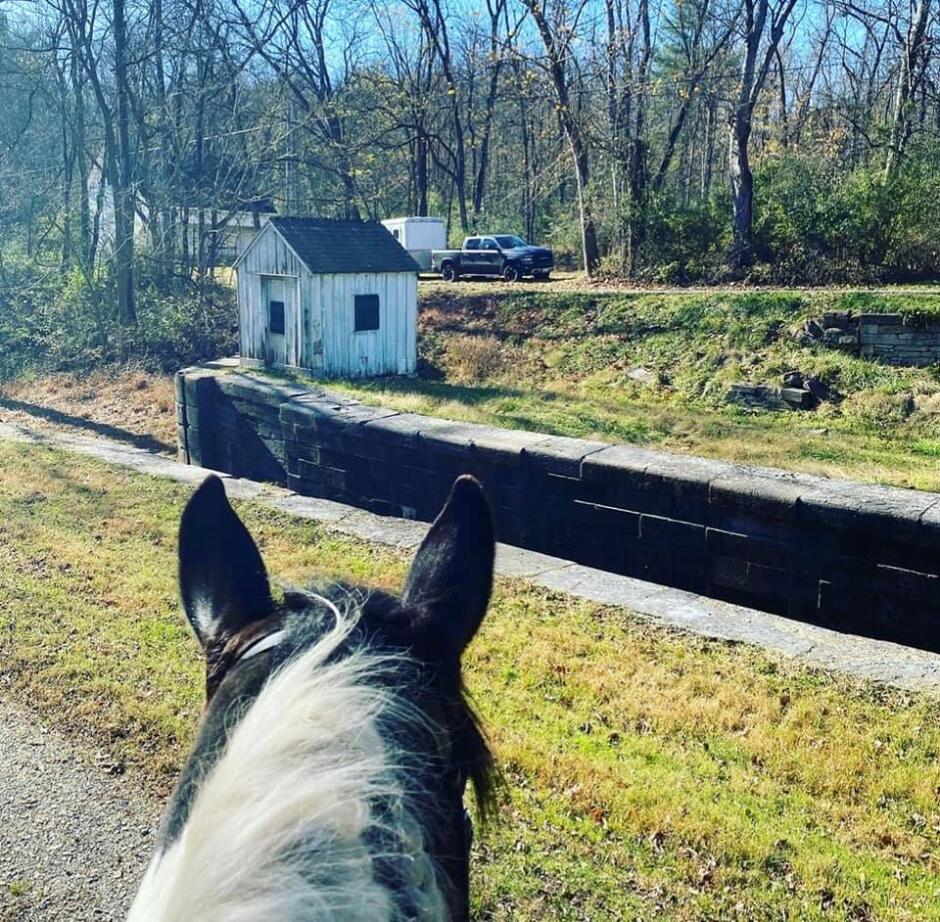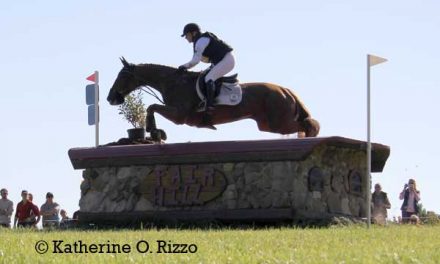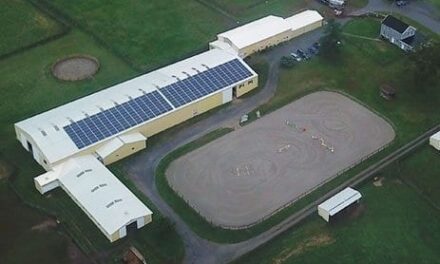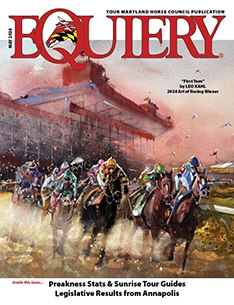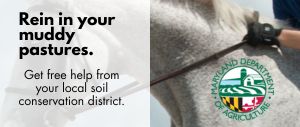Spotlight on Washington County – Chesapeake & Ohio Canal National Historic Park
first published in the March 2022 Equiery
Our Trails & Greenways spotlight this month falls on Washington County, where the most popular park for trail riders is far and away the Chesapeake & Ohio Canal National Historic Park. Seventy-eight miles of the 184-mile park are in Washington County, and the three main access points are Ferry Hill Plantation in Sharpsburg (which is also the Park headquarters); the Williamsport Visitor Center at the Cushwa Basin, and the Bowle’s House Visitor Center in Hancock.
The origins of the C&O Canal date to the origins of the United States itself. At the turn of the 19th century, the newly independent United States began pushing westward towards the Ohio River into areas that had previously been under Chippewa, Iroquois, Ojibwa, and Shawnee control. The U.S. wanted a way to move goods from the Chesapeake Bay markets over the Allegheny Mountains. The National Road had already reached Wheeling, West Virginia, by 1818, and while it was excellent at moving people, it was not as effective for goods. According to the C&O Canal trust, it was more than 30 times more expensive to move cargo over land than by flatwater canal transport. As a result, in 1828, Maryland, Virginia, and Pennsylvania chartered the Chesapeake and Ohio Canal Company to build a direct water route between the Potomac River Valley and the Ohio River Valley.
The C&O Canal never reached its full commercial promise, however, because the B&O Railroad quickly overtook it in both speed and cost effectiveness. The B&O got to Cumberland a full 8 years before the canal did.
What Maryland lost in an active transportation link, it gained in a tranquil and ecologically unique riverfront corridor. The park is a natural buffer along more than half of the entire length of the Maryland side of the Potomac River, and it protects the Potomac from erosion, run-off, and development. The riverfront forest is home to indigenous birds, mammals, amphibians, and reptiles – the Potomac Gorge is one of the most biodiverse spots on the East Coast. Over 1,500 different species of animals live in the Gorge, almost 200 of which are listed as rare, threatened, or endangered.
Trail riders are permitted on 160 of the 184 miles of the canal towpath as long as they do not exceed a “slow trot.”
Horses are not permitted between Georgetown and Swain’s Lock or in the Paw Paw Tunnel. There is a Tunnel Hill Trail that riders can take over the Paw Paw Tunnel instead.
Trail riders may camp in the Park, although groups of four or more horses need a permit. Campers must haul out their manure, and campers are not allowed to bring in their own firewood. Wood must be collected in “the immediate vicinity” of the camp site.
Campers are also allowed to gather edible fruits, nuts, berries, and mushrooms, but there are rules about how they can be gathered (must not disturb the remainder of the plant) and limits on how much you can possess – generally speaking, 1 bushel of nuts and a ½ gallon of fruits and berries.
Sections of the Park are subject to closure for towpath maintenance and because of seasonal flooding. The Park is also still operating under COVID-19 restrictions. Trail riders should always check with the Park for the latest access information, available at https://www.nps.gov/choh/planyourvisit/conditions.htm.

